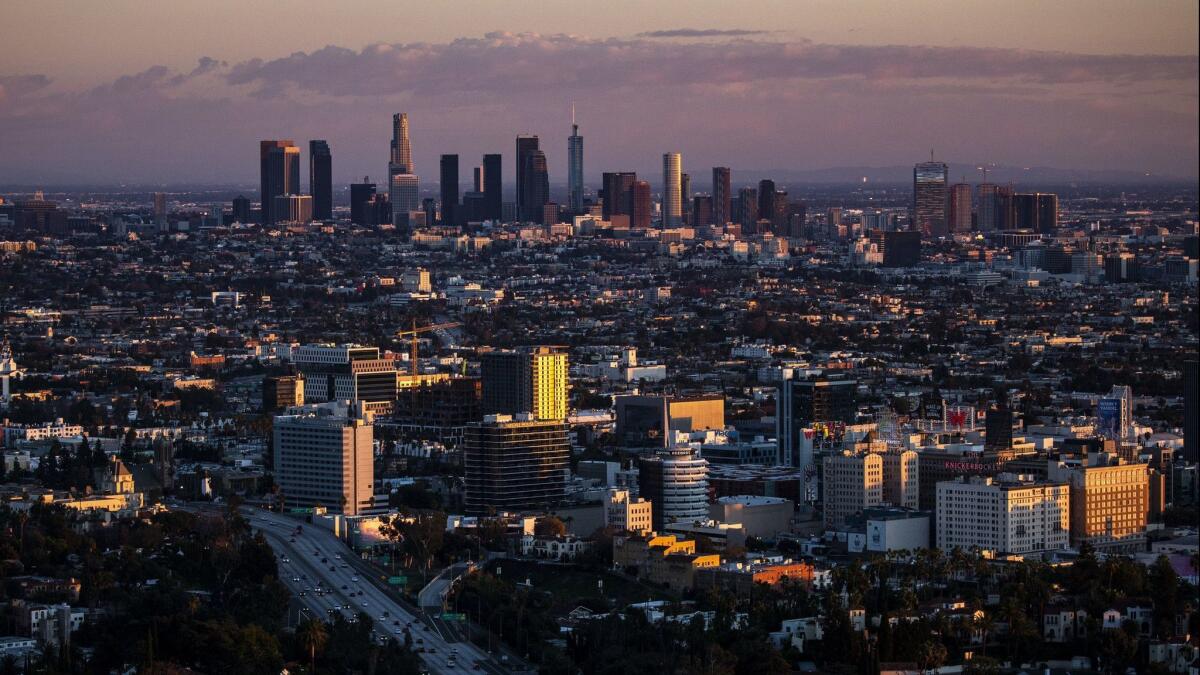Op-Ed: L.A.’s ‘new’ charter just turned 20. How well is it serving the city?

- Share via
In June 1999, Los Angeles voted to remake itself. It replaced its 1925 city charter — which was then reputedly the source of all the city’s civic woes — with a brand new set of rules.
The promised reforms were mighty and conflicting: Put neighborhoods in charge of their own destiny. Make the mayor more powerful and accountable. Put some punch in L.A.’s notoriously low-key politics. Sweep away the peculiarities that have made L.A. a pipsqueak politically compared with New York, Chicago and even tiny San Francisco.
So what happened? Twenty years on, L.A. seems unable to deal with its most basic challenges. Housing is nearly out of reach for all but the rich. Homelessness is exploding. Deadly violence has returned to South Los Angeles with a vengeance. Muscular leadership seems absent.
Did charter reform fail? Not exactly. It turns out that not every civic trial and conflict can be solved by changing the rules of the game. That’s in part because a city charter, just like a constitution, must embody compromise among competing factions if it is to be adopted. But that same compromise may merely put off, rather than resolve, essential decisions about the future.
Los Angeles has often had an aversion to politics and it was perhaps hoping a new charter would make politicking unnecessary. But charters can’t do that.
The immediate task in the late 1990s was to stave off secession movements in the San Fernando Valley, Hollywood and San Pedro by making the city function better. Mayor Richard Riordan was frustrated by a fusty City Hall establishment and outdated authorities and institutions that he thought prevented progress (example: An entire city commission did little more than regulate bingo games, but because of the way the charter was written, it could not be eliminated without a vote of the people). Neighborhood associations wanted recognition — and clout — downtown.
Even in convening civic players to draft a new charter, L.A. bared its divisions. Voters had elected 15 commissioners but as Riordan and organized labor fought to control the new panel, the mayor’s adversaries on the City Council appointed their own charter reform commission, funded it and got it going months before the elected commission could make a move.
The two panels, often working against each other and engaging in mutual sniping, met, debated and deliberated about 200 times over two years. I was a reporter at a small legal newspaper in L.A. then, and I was fascinated by the notion that governance structure might dictate a city’s fate. I attended every session but two of both groups.
Some of the city’s brightest and most talented thinkers filled the commissions’ rosters and staff slots. Constitutional scholar Erwin Chemerinsky, the chairman of the elected commission, is now dean of the UC Berkeley law school. His counterpart on the appointed commission, George Kieffer, chairs the UC Board of Regents. Raphael Sonenshein, who was the executive director of that panel, now heads the Pat Brown Institute at Cal State L.A. (he also wrote a definitive account of L.A. charter reform). The occasionally hapless elected commission finally started getting things done when it made political consultant Geoffrey Garfield its executive director.
Ultimately the rival commissions stopped sniping long enough to generate a single “unified charter” plan instead of two competing documents. (The staffs were still so mutually mistrusting that they battled over who would possess the floppy disk on which revisions were to be made.)
Enter the Fray: First takes on the news of the minute »
The 1999 charter turned previously independent city department heads into a mayor’s Cabinet, and citizen commissions into his agents to oversee them, but it still left the mayor relatively weak when compared to his counterparts in rival cities. Instead of enlarging the City Council to match L.A.’s stunning population growth in the 20th century and making it into more of an oversight and lawmaking body — rather than the city’s real locus of power — the new charter kept the council small. (An option to more than double the council size was rejected by voters.) Each of its 15 near-monarchs have grown even more distant from constituents in their burgeoning districts. The document created neighborhood councils but denied them power over land-use decisions or city service delivery.
Today, though, neighborhoods say “no” all the time — to homeless services, to affordable housing, to changes in road design meant to reduce accidents. City Council members exercise enormous clout over development, yet they seem too skittish for bold decisions to alleviate homelessness and other assorted urban miseries. The now moderately empowered mayor is under attack for failure (so far) to lead the city out of the crisis.
Charter reform quieted the calls for secession and streamlined some archaic city functions. But as the biggest critics of the charter reform point out, the city is locked in the same identity crisis as it was when the two commissions set to work: Is Los Angeles to remain a suburban city of single-family homes and freeway commuters (and the occasional horse and rider trotting down a side street in Atwater Village or Chatsworth)? Or is it to grow into a more densely populated urban center, with urban assets and promises, linked by public transit? How can it reconcile increasing income inequality with the needs of growth?
And yet the inability to either answer or fend off these questions can’t really be considered a failure of charter reform. A government structure at best provides a format for debate. Los Angeles has often had an aversion to politics and it was perhaps hoping a new charter would make politicking unnecessary. But charters can’t do that. Fights must still be fought. Leaders must lead. Citizens must engage.
Robert Greene is a member of The Times’ editorial board.
Follow the Opinion section on Twitter @latimesopinionand Facebook
More to Read
A cure for the common opinion
Get thought-provoking perspectives with our weekly newsletter.
You may occasionally receive promotional content from the Los Angeles Times.











